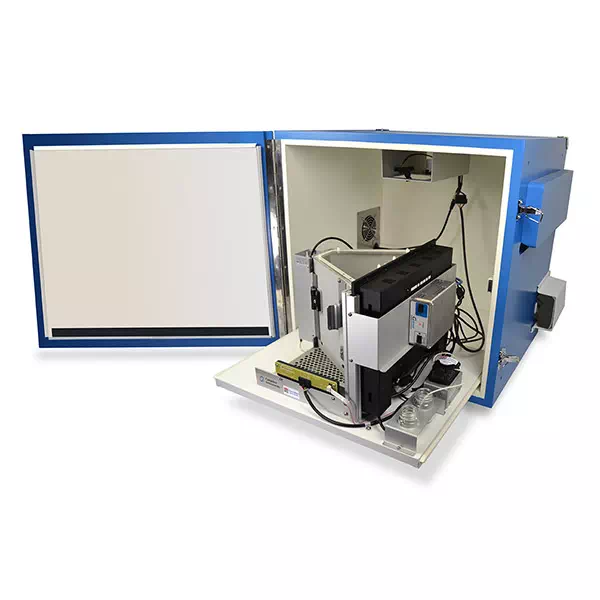Features
- A test of visuomotor mapping / learning a conditional rule
- All training paradigms and advice included
Cognitive Functions Covered
- Learning
Typical Training Times (depends on strain and age)
- 1-2 weeks to train to touch the screen and initiate the task
- ~20 Sessions to train to criterion for task
Example Neural Systems Involved
- Dorsal Striatum
- Posterior Cingulate Cortex
Clinical Areas Showing Impairment
- Huntington’s
- Parkinson’s
References:
- Princz-Lebel O, Wasserman D, Skirzewski M, MacDonald P, Bussey T, Saksida L. (2019) Optimization of the touchscreen-based visuomotor conditional learning task in mice. The Canadian Association for Neuroscience (CAN-ACN) Scientific Program. Toronto, Ontario, Canada: The Canadian Association for Neuroscience; 2019.
- Delotterie D, Mathis C, Cassel JC, Dorner-Ciossek C, Marti A. (2014) Optimization of touchscreen-based behavioral paradigms in mice: implications for building a battery of tasks taxing learning and memory functions. PLoS One.; 9(6):e100817
- Janisiewicz AM, Baxter MG. (2003) Transfer effects and conditional learning in rats with selective lesions of medial septal/diagonal band cholinergicneurons. Behav Neurosci.; 117(6):1342-1352.
- Chudasama Y, Bussey TJ, Muir JL. (2001) Effects of selective thalamic and prelimbic cortex lesions on two types of visual discrimination and reversal learning. Eur J Neurosci.;14(6):1009-1020.
- Bussey TJ, Duck J, Muir JL, Aggleton JP. (2000) Distinct patterns of behavioural impairments resulting from fornix transection or neurotoxic lesions of the perirhinal and postrhinal cortices in the rat. Behav
Brain Res.; 111(1?2):187-202.


